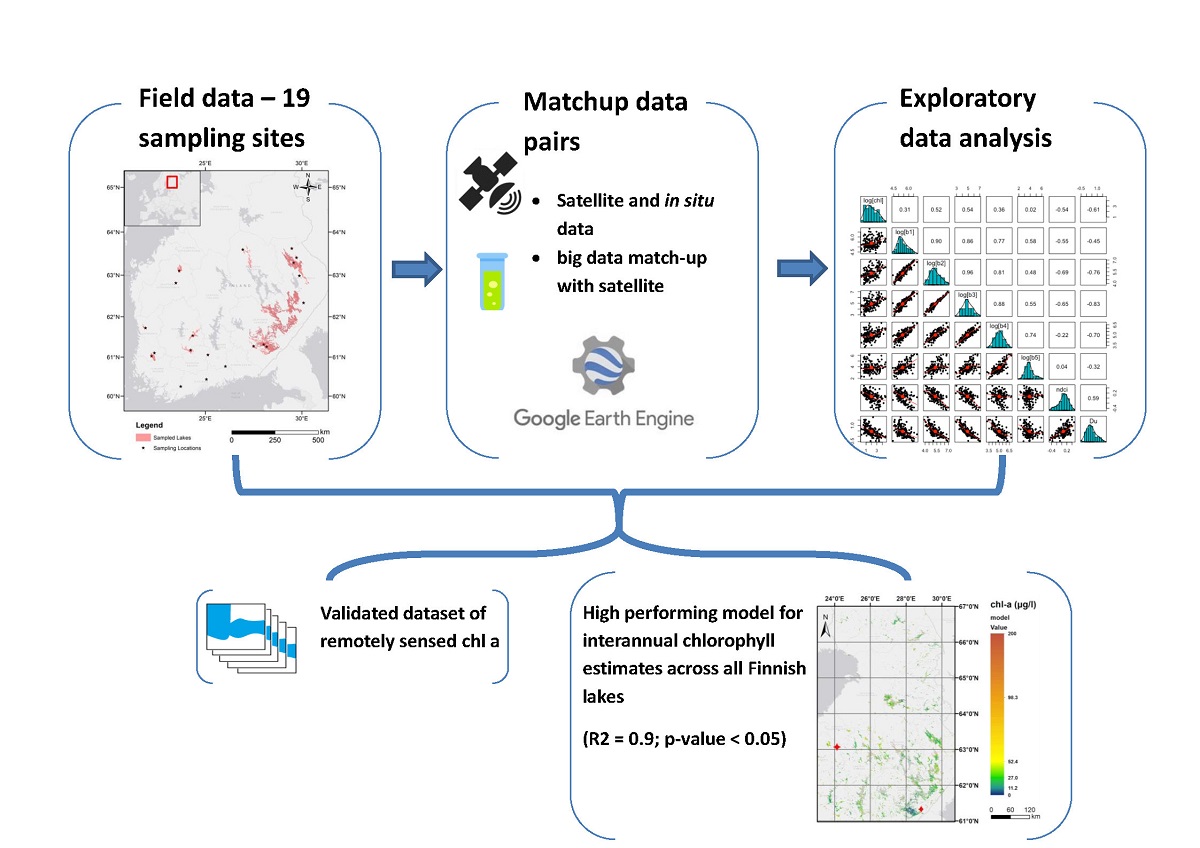Monitoring lakes in high-latitude areas can provide a better understanding of freshwater systems sensitivity and accrete knowledge on climate change impacts. Phytoplankton are sensitive to various conditions: warmer temperatures, earlier ice-melt and changing nutrient sources. Satellite imagery can monitor algae biomass over large areas. The detection of chlorophyll a (chl-a) concentrations in small lakes is hindered by the low spatial resolution of conventional ocean colour satellites. The short time-series of the newest generation of space-borne sensors (e.g. Sentinel-2) is a bottleneck for assessing long-term trends. Although previous studies have evaluated the use of high-resolution sensors for assessing lakes' chl-a, it is still unclear how the spatial and temporal variability of chl-a concentration affect the performance of satellite estimates. We discuss the suitability of Landsat (LT) 30-m resolution imagery to assess lakes' chl-a concentrations under varying trophic conditions, across extensive high-latitude areas in Finland. We use in situ data obtained from field campaigns in 19 lakes and generate remote sensing estimates of chl-a, taking advantage of the long-time span of the LT 5 and 7 archives, from 1984 to 2017. Our results show that linear models based on LT data can explain approximately 50 % of the chl-a interannual variability. However, we demonstrate that the accuracy of the estimates is dependent on the lake's trophic state, with models performing in average twice as better in lakes with higher chl-a concentration (> 20 µg/l) in comparison with less eutrophic lakes. Finally, we demonstrate that linear models based on LT data can achieve high accuracy (R2 = 0.9; p-value < 0.05) in determining lakes' annual mean chl-a concentration, allowing the mapping of the trophic state of lakes across large regions. Given the long time-series and high spatial resolution, LT-based estimates of chl-a provide a tool for assessing the impacts of environmental change.

